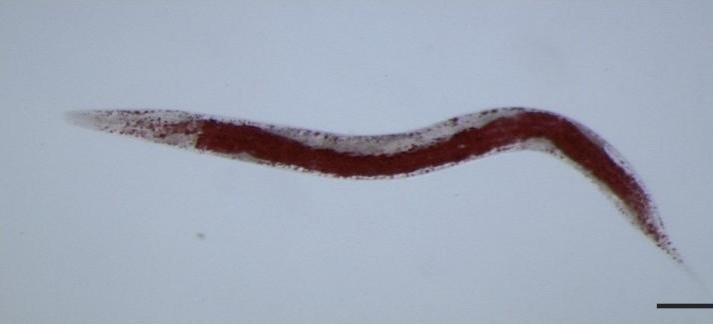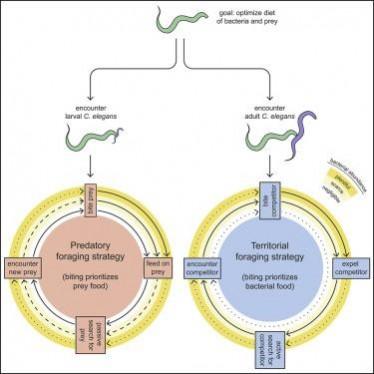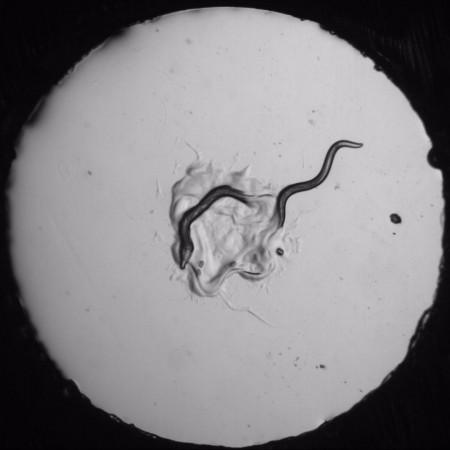We know that human beings and other higher mammals are capable of making complex decisions. However, what about simpler organisms such as worms? It has been believed that worms' actions are uncomplicated and singular in focus (feeding). However, scientists have now found that worms are can take several factors into consideration and choose between different actions.
In a new study, researchers from Salk Institute for Biological Studies have discovered that the worm Pristionchus pacificus can take into account multiple factors before deciding to bite another worm, Caenorhabditis elegans, either to predate or express territorial aggression. The findings provide new insights into the manner in which scientists evaluate motivation and cognitive abilities in animals.
'Our study shows you can use a simple system such as the worm to study something complex, like goal-directed decision-making. We also demonstrated that behavior can tell us a lot about how the brain works," said Dr. Sreekanth Chalasani, senior author of the study, in a statement. The paper was published in the journal Current Biology.
Worm With A Bite

Pristionchus pacificus is a predatory species of nematode (roundworms). A notable behavioural trait of P. pacificus—which has only 302 neurons—is that it relies on biting for defending its food sources as well as for attacking and eating its prey. While the worm prefers eating bacteria, it is known to use its teeth to attack and eat Caenorhabditis elegans.
Much like P. pacificus, C. elegans is a free-living nematode. It is found in temperate soil environments. The worm is known to compete with P. pacificus for bacterial food sources and also serves as its prey. Therefore, the team set its sight on determining what P. pacificus' intentions are when it chooses to bite C. elegans.

Researchers have spent several decades studying cells and connections within the brain that might play a role in the process of decision making. However, for the current research, the authors employed a different approach: they analyzed the behaviour of the worm and not the neurons that might be involved.
Same Action, Different Intentions
In order to understand P. pacificus' biting behaviour, the team placed both species in a bacterial patch and examined their interactions carefully across different time intervals. They discovered that P. pacificus chooses from two tactics of biting against C. elegans.

In the first strategy (i.e) the territorial approach, the aim of biting is to keep C. elegans away from a food source that both species are competing for. It was observed that P. pacificus utilizes this strategy against adult C. elegans which are hard to kill and provide stiff competition for food.
However, in the second strategy (i.e) the predatory approach, the aim of biting is to kill. This strategy is employed against the larvae of C. elegans, which are easy to kill and serve as unchallenging prey.
Weighing Pros and Cons
To the authors, this dual approach towards biting served as an indicator of P. pacificus weighing the benefits and costs of the several outcomes that the action of biting can result in. This behaviour is common in vertebrates. However, it was unanticipated in worms.

Dr. Kathleen Quach, first author of the study, noted, "Scientists have always assumed that worms were simple -- when P. pacificus bites we thought that was always for a singular predatory purpose. Actually, P. pacificus is versatile and can use the same action, biting C. elegans, to achieve different long-term goals. I was surprised to find that P. pacificus could leverage what seemed like failed predation into successful and goal-directed territoriality."
The authors wish to delve deeper into determining which of P. pacificus' cost-benefit calculations are flexible or inherent, in the future. They hope that additional research in the subject can help in learning more about the molecular basis that regulates decision-making.
"Even simple systems like worms have different strategies, and they can choose between those strategies, deciding which one works well for them in a given situation. That provides a framework for understanding how these decisions are made in more complex systems, such as humans," stated Dr. Chalasani.
















